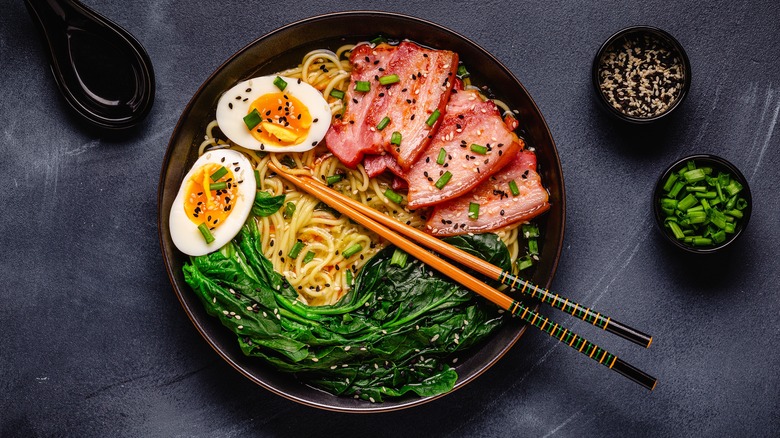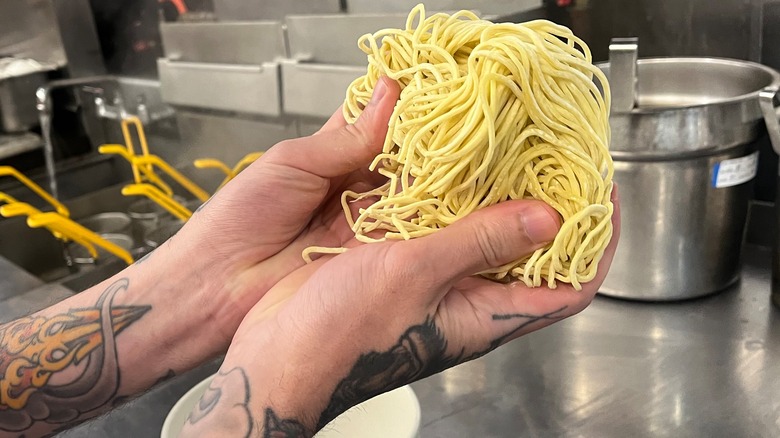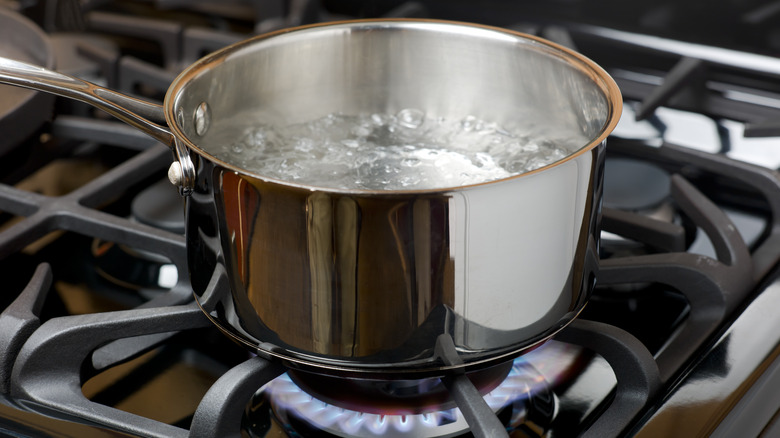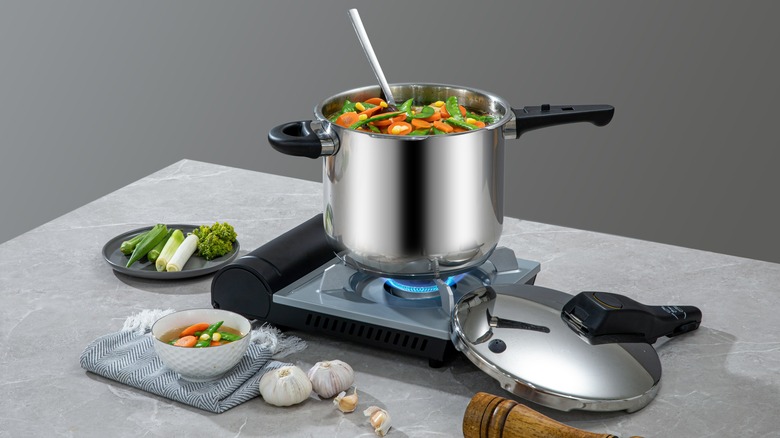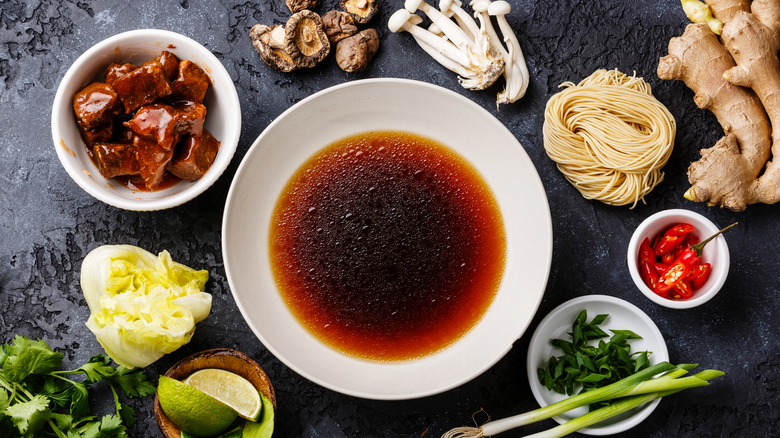The Mistakes You're Making With Ramen At Home, According To Momofuku's Chef De Cuisine
Ramen is one of the most nourishing meals to enjoy during the cold-weather months. This Japanese noodle dish features rich and savory broths, fresh noodles with a satisfying bite, and seemingly endless customization options, including the type of broth you use and your choice of toppings depending on your diet and flavor preferences. While many have their first experience with ramen within the instant variety — affordable, microwavable Styrofoam containers of instant ramen — you can enjoy gourmet homemade ramen in your own kitchen by following the guidance of Momofuku's chef de cuisine at Noodle Bar East Village, Pablo Vidal Saioro.
We recently went behind the counter of Noodle Bar with chef Vidal Saioro for an exclusive interview with Tasting Table, where he gave a tutorial on how to make one of Momofuku's famed ramen and shared the most common mistakes he sees home cooks make when preparing ramen at home. As is the case with most recipes, ingredients matter and so does timing.
The type of noodles you use matters
One of the most important components of a satisfying bowl of ramen is the ramen noodles themselves. According to chef Vidal Saioro, the type of ramen noodles you cook with have a tremendous impact on the overall taste and experience of the dish. Many home cooks use dried noodles but his recommendation is always, if possible, to go with fresh ramen noodles. "If you don't use fresh noodles, it's hard to achieve the springy texture we enjoy when slurping noodles," chef Vidal Saioro explains. Dry noodles aren't able to conjure as nuanced a texture as fresh noodles, which can detract from the sensory experience.
While fresh noodles may be less accessible for some cooks in terms of affordability and grocery store availability, you can prepare fresh ramen noodles at home with a few simple ingredients you likely already have on hand: flour, baking soda, salt, and water.
Water temperature
Whether or not you're using fresh ramen noodles, the way you cook those noodles can make or break your bowl of ramen. The most common mistake chef Vidal Saioro finds folks making when preparing ramen at home has to do with the temperature of the water they boil the noodles in. "What I worry about is that when people cook [ramen] at home, the stove is not strong enough. So when you drop cold noodles in the water, the water just doesn't boil," he notes.
If your water is not at a rolling boil when the noodles enter the pot, the ramen noodles will take longer to cook, which often leads to unintentional overcooking. Ramen noodles are best enjoyed when cooked al dente, ensuring they have a nice bite. While cooking noodles al dente has become a general recommendation in the culinary world, that guidance is all the more important when preparing ramen, as the noodles will return to hot water in the form of the ramen broth, so any overcooking will render them gummy and overly soft. When your water reaches a proper boil, cook the ramen noodles for around 40 seconds, using chopsticks or a pasta fork to ensure equal cooking.
Taking your time with the broth
Once you've mastered your ramen noodle preparation, you may think the hard work is done, but the heart of any bowl of ramen is the savory broth. To create a rich and satisfying broth, you can make dashi, a popular Japanese stock with mushrooms, bonito flakes, and niboshi, or you can soak proteins such as chicken, beef, or pork to extract all the collagen for a sumptuous taste.
Regardless of the ingredients you use or the flavor profile that you hope to conjure, chef Vidal Saioro's primary recommendation for your ramen broth involves timing. "Most people don't cook [their broth] long enough." Undercooking your broth leads to less intense flavors and an overall weak bowl of ramen.
Chef Vidal Saioro's guidance is to cook your broth in a pressure cooker for at least one hour, but preferably two. If you don't have access to a pressure cooker, he advises cooking your broth for at least six hours in a regular pot on the stove. That extra time will allow all the flavors to intensify, which will result in that intense umami we long for in a bowl of ramen.
Timing is everything
The theme of chef Vidal Saioro's general recommendations for making delicious ramen at home might boil down to timing. The timing of how long you cook your noodles, the timing of how long you cook your broth, and most significantly, the timing of how you incorporate the rest of the ramen ingredients. Chef Vidal Saioro describes this process as "planning ahead."
When preparing ramen in your home kitchen, it's essential to plan ahead by prepping all of your ingredients in advance so that you'll be able to add them immediately to your ramen broth once it's finished. This preserves the texture of the ramen noodles and prevents the supplemental ingredients from wilting or overcooking.
This step is referred to as mise en place, a French term that references arranging your ingredients before the real cooking begins, which is essential because it allows you to add each ingredient at the proper time the recipe calls for it. For the same reason that it's vital not to overcook ramen noodles, it's vital to have any toppings ready to incorporate into your ramen once the noodles are finished so that you can enjoy the dish before the heat disrupts the texture or flavor of the subsequent ingredients.
